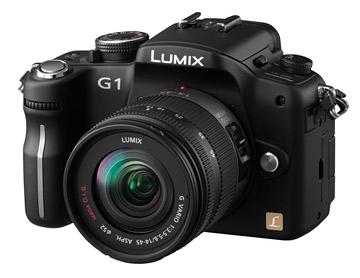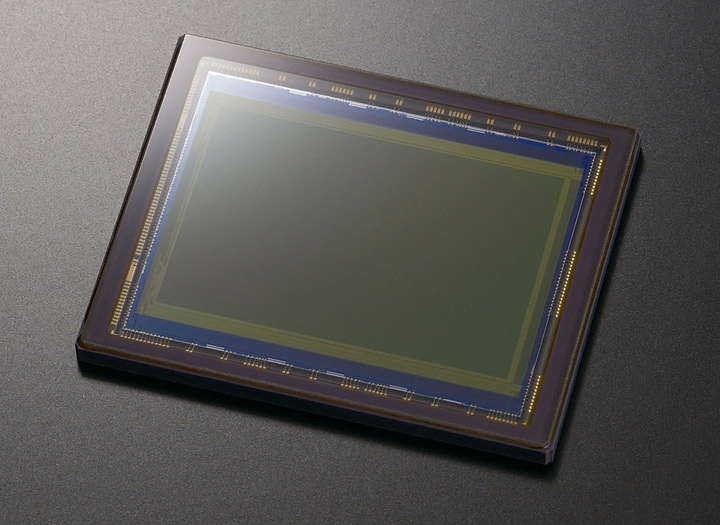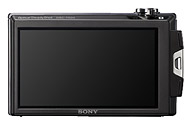The Future of Photography (2008)
How do you imagine the future of photography? Digital photography is quickly evolving, and I think that in future we will see many innovations, that will open new horizons to photographer and videomakers. In this article I have described my current (September 2008) view of the future.
Video mode
The Nikon D90 and the successor of Canon 5D are the first cameras that offers HD video mode: I think that it is destined to become a standard feature for all future cameras. Still photography and video will soon converge, with many advantages:
. the APS-C or fullframe sensors of SLR cameras are much bigger than the sensors of the majority of camcorders, thus they allow to get a much shallower depth of field and more
pleasing background blur!
. you will be able to
use all you SLR lenses to take videos - the majority of camcorders have poor wide-angle capabilities and poor macro mode (you can focus even at very short distances, but you have to use the shortest focal length and you get unpleasing background blur). Imagine taking videos with a 600mm f/4, or with a 180mm macro, or with a 5x Canon MP-E macro, with a Fisheye or a Sigma 12-24mm ultra wide angle...
. thanks to their large sensors, "still" cameras have much, much
better high-ISO capabilities than traditional camcorders.
No more mirror: EVF (Electronic Viewfinder) cameras
On September 12, 2008, Panasonic has announced the first "SLR-like" camera with interchangeable lenses, but no mirror, nor optical viewfinder: the Panasonic G1 (
click here for Dpreview's report). Even though this kind of cameras has still some limitations, I believe that in 5-10 years they will become the new standard. This design offers various advantages:
. it is possible to create
lighter, smaller cameras (since there are no longer the mirror and the pentaprism that take space). In alternative, manufacturers could create cameras with the same size and weight of the current SLRs, but with more and better features, taking advantage of the more room now available inside the camera body.
. the EVF (electronic viewfinder) can be
brighter and larger than the optical viewfinder. The EVF of the Panasonic G1 is already better than the optical viewfinder of some reflex, as Dpreview says: "The real revelation is when you try it next to the Olympus E-420 (using our tried and tested method of putting a camera up to each eye); the G1's viewfinder image looks huge (it's at least 50% larger), and a lot brighter" (
source page here).

. the EVF can show the
depth of field in real-time without getting darker. With optical viewfinder, instead, when you activate the depth of field preview, the viewfinder becomes darker, and at small apertures it is really difficult to evaluate the scene. (indeed, with my Canon 1DsIII I never use the depth of field preview into viewfinder, because the darkening makes it almost unusable)
. you no longer need
mirror lock up, since there is no mirror! This is a big plus for macro photography. With some SLRs that offers Live View (Canon 40D, Canon 50D) it is already possible to avoid mirror lock up if you are shooting with live view, while other SLR (e.g. Canon 1DsIII), in spite of the live view, still require mirror lock up. With all "EVF cameras", instead, mirror lock up will be a thing of the past.
. it is much easier to do
sensor cleaning, because the sensor is much more close to the lens mount, and there is not the risk of damaging the mirror, the AF sensors or the shutter.
. very
silent operation, since there is not the "tlack!" of the mirror: there will be no risk to scare shy animals with the shutter sound.
. another advantage of no mirror is the
possibility of very high frame rates, both for video and for photography - imagine being able to shoot at 20 FPS or so at full resolution, or to shoot HD video at 60FPS or more! The Panasonic G1 is not a professional sport camera so it has not these capabilities, but I'm sure that in future we will see such cameras.
Contrast Detection AF
Nowadays, all SLR use Phase Detection AF; some SLR have a kind of contrast detection AF during live view, but it is pretty poor. The Panasonic G1 is the first camera that has a serious contrast detection AF, and I think that in future this system will become more and more diffused. The advantages of contrast detection AF are:
. it
does not require additional AF sensors, so the hardware is simpler (and a little cheaper).
. it can be enhanced, or even completely re-designed, by
firmware: you are no longer dependent by many hardware components (for contrast detection AF, the only hardware component is the main image sensor).
. it has the potential to be
more precise than phase detection AF, since it can check the focus at pixel-level.
In-camera memory and Wi-Fi
In five or ten years, there will no longer be SD or CF memory cards. All cameras will have 100 or 200 GB of in-camera flash memory; when you want to download the photo, you just have to place the camera near your PC or Mac, and the photos will be immediately transferred through Wi-Fi. If you takes photos in studio, you will even be able to see the photos immediately pop up on your computer screen! (nowadays some digicams already have built-in Wi-Fi, but there is not yet any reflex with this capability built-in).
. 100 or 200 GB allows to store
thousands of photos even with high resolution cameras, you will never run out of memory.
. the internal memory will be fast enough to allow you to use
continuos shooting as much as you want, there will be no longer buffer limitations!
. through Wi-Fi, you will even be able to connect the camera to your 4G mobile phone, to
send the photos immediately on internet. For photo journalism, this is a useful possibility; nowadays many professional camera have already this capability, but only using a Wi-Fi hotspot, they are not able to use the cellular network...not yet :-)


. I expect to see more and m
ore (useless) megapixels in future cameras. Why useless? Because with the current 10 megapixel (APS) - 20 (FF) megapixel cameras you already have all the resolution you need; I think that 10 megapixel are more than enough for amateurs, and with 20 megapixel even the most exigent professional have enough resolution... Sadly, the "megapixel race" is not likely to end soon, and I think that in 3-4 years we will see 20-25 megapixel APS-C cameras and 40-50 megapixel FF...
. hopefully, the manufacturers will be able to improve the
image quality at high ISO, in spite of the exaggerated resolutions. Even though exceptional high ISO capabilities are not essential, and all SLR cameras currently in production are at least usable up to ISO 1600, I'd really like to be able to shoot at very high ISO with little noise.
. it is likely that future camera will have
more dynamic range, even though honestly I don't care much about DR - even current cameras are pretty good in this respect, and when I need more DR I use blended exposures.
Not essential, but useful: GPS and touchscreen
. it is likely that future cameras will include a GPS receiver for
geotagging. Honestly I have never considered geotagging an important feature, but it seems to get more and more popular, and since GPS receivers are cheap and small, I think that they will end up being integrated in cameras.

. in some digicams the
touchscreen has already replaced all the button on the back of the camera, and in 4-5 years I expect to see them even in SLRs, even though they won't replace all the buttons as they do in digicams. Touchscreen would be useful for the navigation into camera menus and during photo playback.
Less prints and better screens
Ten years ago, when I begun taking photos with a film camera, the only purpose of a photo was to make the print. Nowadays, I make few prints only when some friend ask me a print of my photos - otherwise,
I prefer view the photos on my high resolution 19" LCD screen, that has roughly the same size of a 30x40cm print. The image quality of many modern screens is fantastic, and you can view as many high resolution photos as you want, without spending a single $ for printing!
If the high resolution screen are the equivalent of large prints,
the mobile phones are the substitute of 5x7" prints. You no longer have to print and to carry with you dozens of 5x7" photos to show your work or your latest trip to friends: nowadays, there are already mobile phones with 3"-4" screens, with a resolution of 640x480px or even 800x480px. On these screens you can display photos with an amazing clarity and detail, and into a mobile phone you can store thousands of photos!
In future, I think that these trends will go on more and more, thanks to the improvement of technology: super thin, large high resolution screens will be the standard for desktop computers (that will take less space than current computers, thanks to "all in one" designs as the
Apple iMac or the
Dell XPS One), and 3-4" high resolution screens will become the standard even in the mid-range and low-range mobile phones.





 JuzaPhoto contains affiliate links from Amazon and Ebay and JuzaPhoto earn a commission in case of purchase through affiliate links.
JuzaPhoto contains affiliate links from Amazon and Ebay and JuzaPhoto earn a commission in case of purchase through affiliate links.